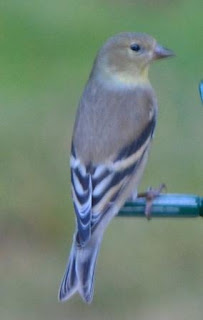Appearance:
Large plover
Large, round head
Short, dark bill
Large eye
Brownish-tan upper parts
White underparts
Two black bands on chest
White collar and forehead
Orange rump, visible in flight
Listen to its call.
 I ventured back to the rocks by the marina today to see who was hanging about. Although the sun was out, the wind at the shore was bitter so I didn't last very long. I just managed to snap a few pictures of these birds before my hands turned completely numb.
I ventured back to the rocks by the marina today to see who was hanging about. Although the sun was out, the wind at the shore was bitter so I didn't last very long. I just managed to snap a few pictures of these birds before my hands turned completely numb. Word history from the Merriam Webster Student Dictionary:
Killdeers are not vicious birds. They have no special hatred of deer, and they do not eat venison.
Whew ... I'm glad we got that cleared up.
 Incidentally, both its common and Latin names come from its distinctive call, "kill-deear". Vociferus means shouting noisily.
Incidentally, both its common and Latin names come from its distinctive call, "kill-deear". Vociferus means shouting noisily.Learn more about the Killdeer.












































.jpg)


